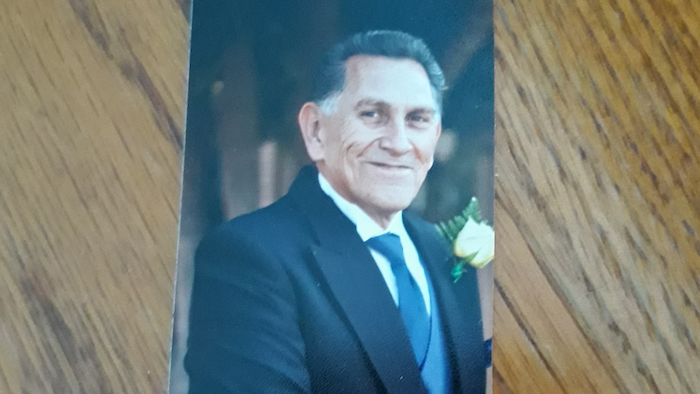The man’s family is upset

By Dakin Andone and Artemis Moshtaghian
Preparing for the death of a loved one is difficult no matter the circumstances.
But Annalisia Wilharm said she never expected a doctor would deliver the bad news about her grandfather via a video screen on a robot.
Wilharm was sitting by her grandfather’s bedside in the ICU of the Kaiser Permanente Medical Center in Fremont, California, last Monday night when the machine rolled into their room and a doctor, appearing via live video link, offered his grim prognosis. Her grandfather Ernest Quintana, 78, died the next day.
“I think they should have had more dignity and treated him better than they did,” Wilharm told CNN. “No granddaughter, no family member should have to go through what I just did with him.”
Wilharm told CNN her family knew that her grandfather would die soon. But they’re angered by the way the situation was handled and how the news was delivered. She said she and her family hope no one else receives the same treatment.

“I was so scared for him and disappointed with the delivery,” Wilharm said, choking up. “And I could tell by the look on his face what that did to him.”
A spokeswoman for the hospital offered “sincere condolences to the family” in a statement sent to CNN.
“We take this very seriously and have reached out to the family to discuss their concerns,” said Michelle Gaskill-Hames, a senior vice president and area manager of Kaiser Permanente Greater Southern Alameda County.
“Our physicians and nurses were in regular, in-person communication with the patient and family about his condition from the moment he entered our hospital,” she added. “The evening video tele-visit was a follow-up to earlier physician visits — it did not replace previous conversations with patient and family members and was not used in the delivery of the initial diagnosis.”

For years, Quintana had lived with chronic obstructive pulmonary disease, a progressive lung disease that make makes it hard to breathe. It includes emphysema and chronic bronchitis.
Last Monday, doctors at the hospital conducted tests to assess the state of Quintana’s lungs. That evening, Wilharm told her mother and grandmother — Quintana’s wife of 58 years — that the pair should go home and get some rest.
Soon after a robot with a video screen came into the room, accompanied by a nurse who remained silent. A doctor on the screen began speaking to them.
Wilharm said she had no idea who the doctor was or where he was located.
She filmed the interaction on her phone as the doctor relayed the results of her grandfather’s tests.
In the footage viewed by CNN, the doctor on the screen tells Quintana, “Unfortunately there’s nothing we can treat very effectively.”
The doctor explains they can give Quintana morphine to make him more comfortable, but that would make breathing more difficult.
Wilharm then tells her grandfather the doctor is recommending hospice care at home.
“You know, I don’t know if he’s going to get home,” the doctor says, adding that the best treatment plan at that point was to begin focusing on Quintana’s comfort.
Wilharm told CNN that at that point she had to call her mother and grandmother so they could get back to the hospital.
“It didn’t matter (to the hospital) that his wife of 58 years wasn’t there for that,” she said.

Wilharm told CNN that her family was under no illusions about her grandfather’s condition.
“We knew that we were going to lose him,” Wilharm told CNN in a phone interview Saturday. “Our point is the delivery (of the news). There was no compassion.”
When her grandmother returned to the hospital, she asked the nurses about the robot. According to Wilharm, they explained the hospital was small and the robot was used to make rounds at night.
Gaskill-Hames, the hospital spokeswoman, said the health care provider is “continuously learning how best to integrate technology into patient interactions.”
“In every aspect of our care, and especially when communicating difficult information, we do so with compassion in a personal manner,” she said, adding that the term “robot” is “inaccurate and inappropriate.”
“This secure video technology is a live conversation with a physician using tele-video technology, and always with a nurse or other physician in the room to explain the purpose and function of the technology,” Gaskill-Hames added. It “allows a small hospital to have additional specialists such as a board-certified critical care physician available 24/7, enhancing the care provided and bringing additional consultative expertise to the bedside.”
Wilharm told CNN that a doctor had visited Quintana in person earlier in the day.
Wilharm said the in-person doctor was “very sweet” and held her grandfather’s hand as she spoke with him about hospice care and his options.
Gaskill-Hames said the hospital does not encourage the use of technology to replace personal interactions between patients and health care workers.
“We understand how important this is for all concerned, and regret that we fell short of the family’s expectations,” she said.
Wilharm agrees.
“That was one of the worst days of my life,” she said.
Complete Article ↪HERE↩!
